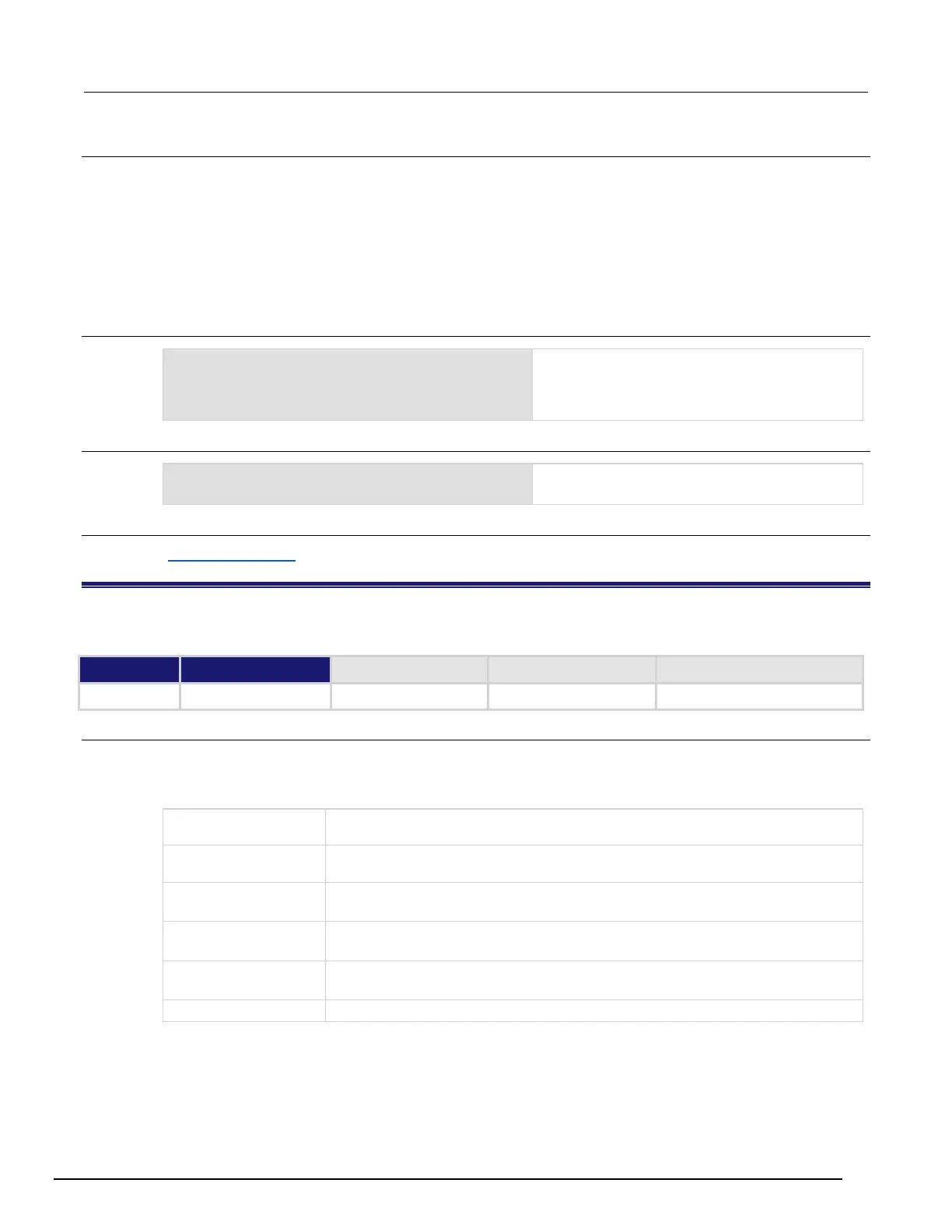Series 3700A System Switch/Multimeter Reference Manual Section 11: TSP command reference
3700AS-901-01 Rev. D/June 2018 11-299
Details
TSP-enabled instruments do not have inherent query commands. Like other scripting environments,
the print() command and other related print() commands generate output. The print()
command creates one response message.
The output from multiple arguments is separated with a tab character.
Numbers are printed using the format.asciiprecision attribute. If you want use Lua formatting,
print the return value from the tostring() function.
Example 1
Example of an output response message:
10
Note that your output might be different if you set
your ASCII precision setting to a different value.
x = true
print(tostring(x))
Example of an output response message:
true
Also see
format.asciiprecision (on page 11-245)
printbuffer()
This function prints data from tables or reading buffer subtables.
Usage
printbuffer(startIndex, endIndex, bufferVar)
printbuffer(startIndex, endIndex, bufferVar, bufferVar2)
printbuffer(startIndex, endIndex, bufferVar, ..., bufferVarN)
Beginning index of the buffer to print; this must be more than one and less than
endIndex
Ending index of the buffer to print; this must be more than startIndex and less
than the index of the last entry in the tables
Name of first table or reading buffer subtable to print; may be a default buffer
(defbuffer1 or defbuffer2) or a user-defined buffer
Second table or reading buffer subtable to print; may be a default buffer
(defbuffer1 or defbuffer2) or a user-defined buffer
The last table or reading buffer subtable to print; may be a default buffer
(defbuffer1 or defbuffer2) or a user-defined buffer
One or more tables or reading buffer subtables separated with commas

